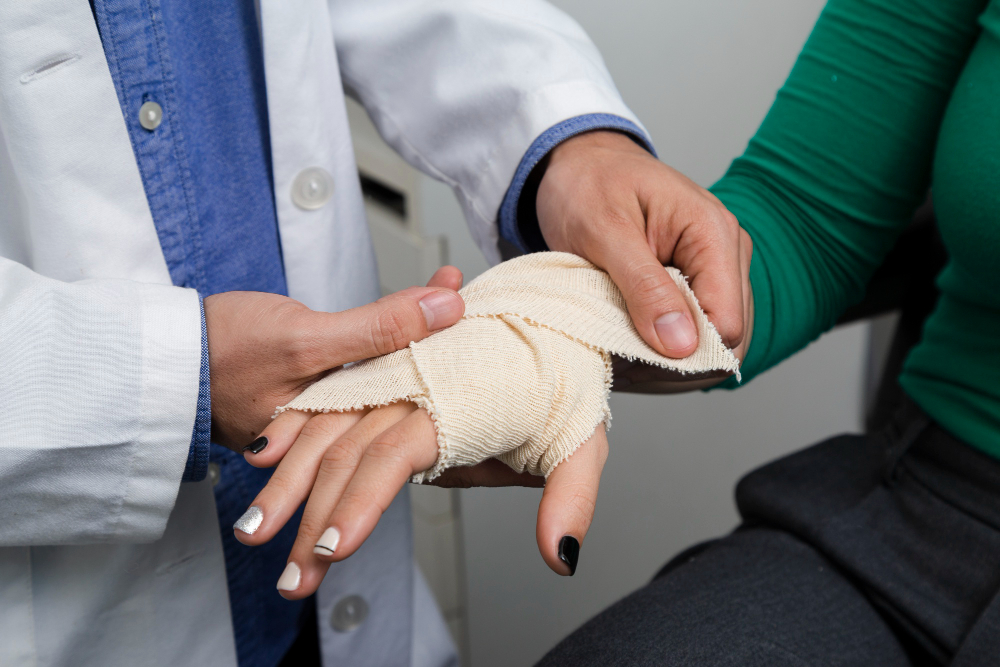As temperatures begin to climb with the approach of summer, heat-related injuries in the workplace become a significant concern. Not only do these injuries affect the well-being of employees, but they can also impact productivity and lead to potential legal issues for employers. Understanding and preventing heat-related injuries are crucial to maintaining a safe workplace.
Contents
The Risks of Workplace Heat Exposure
Employees who work in outdoor environments or hot indoor settings, such as construction sites, farms, and manufacturing plants, are particularly vulnerable to heat-related illnesses. These can range from mild conditions like heat rash or heat cramps to more serious ones like heat exhaustion, and in extreme cases, heatstroke—a medical emergency that can be fatal if not promptly treated.
Employer Responsibilities
According to the Occupational Safety and Health Administration (OSHA), employers are responsible for providing a workplace free from recognized hazards, including excessive heat. While OSHA doesn’t have a specific standard that covers working in hot environments, under the General Duty Clause, Section 5(a)(1) of the Occupational Safety and Health Act of 1970, employers can be cited for exposing workers to a “recognized hazard” like heat stress.
Implementing Heat Safety Policies
It’s vital for employers to establish comprehensive heat safety policies to manage and mitigate the risks of heat-related injuries. Here’s how they can safeguard their employees:
1. Heat Acclimatization
Employees new to outdoor jobs or returning after a week or more off are more susceptible to heat illnesses. A heat acclimatization program can help workers build up tolerance to high temperatures by gradually increasing exposure over a 7 to 14-day period.
2. Hydration
Keeping workers well-hydrated is essential. Employers should provide cool drinking water at accessible locations and encourage workers to drink water every 15 minutes, even if they are not thirsty.
3. Rest Breaks
Scheduled rest breaks allow workers to recover from the heat, especially during peak temperature hours. Providing a shaded or air-conditioned area for breaks can help employees cool down.
4. Dressing for the Heat
Lightweight, loose-fitting, and light-colored clothing can help keep body temperatures down. When possible, provide or require protective gear that includes cooling elements, such as vests with ice packs or moisture-wicking fabrics.
5. Monitoring Conditions
Employers should monitor heat conditions and have a plan to adapt workloads and schedules as temperatures rise. OSHA’s Heat Safety Tool, available as a mobile app, can help keep track of the heat index and risk levels.
6. Recognizing Symptoms
Training is key to recognizing early symptoms of heat-related illnesses, such as headache, dizziness, weakness, moist skin, and a fast heartbeat. Both workers and supervisors should be trained to identify these signs and know how to respond.
7. Emergency Response
A clear and practiced emergency protocol should be established for instances of heatstroke, where every second counts. Employees should know how to call for medical help while they work to cool down an affected coworker by moving them to the shade and applying cool water.
8. Acclimating Workloads
Adjusting workloads and schedules to avoid peak heat times and rotating job functions among workers can reduce heat exposure. Critical tasks requiring heavy exertion should be scheduled for cooler parts of the day.
9. Engineering Controls
Whenever possible, use engineering controls to reduce heat in the workplace. This can include air conditioning, ventilation, cooling fans, and heat shields or barriers.
10. Administrative Controls
Implement work-rest cycles, provide plenty of cool water, and ensure that first aid is readily available. Promote a buddy system where workers partner up to monitor each other for signs of heat stress.
Understanding Legal Rights and Remedies
Workers should know their rights when it comes to heat safety. They are entitled to a safe working environment, and if they suffer a heat-related injury due to employer negligence, they may be eligible for workers’ compensation. In severe cases, they may need to seek legal recourse.
In the unfortunate event of a heat-related injury, workers should:
- Report the injury to their employer immediately.
- Seek medical attention even if the injury seems minor.
- Document the incident, including the environmental conditions and any lack of safety measures.
By prioritizing heat safety and proactively reducing the risks of heat-related injuries, employers uphold their legal obligations and ensure that workers remain healthy and productive. In return, workers must remain vigilant, abide by safety protocols, and communicate with their employers about potentially hazardous conditions. Together, effective preventive measures and ongoing education can help make the hotter months safer for everyone in the workplace.




